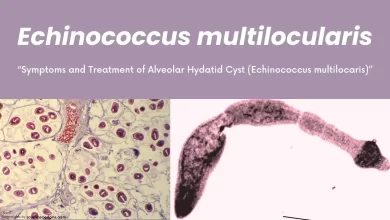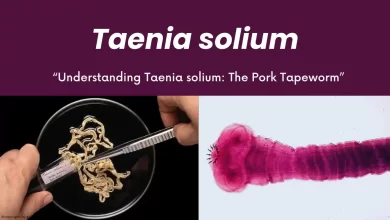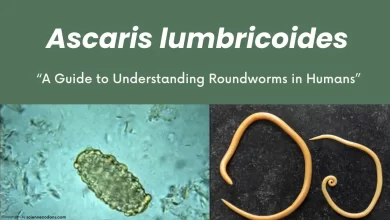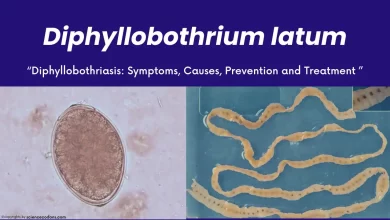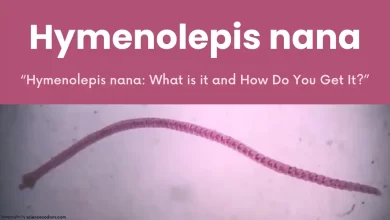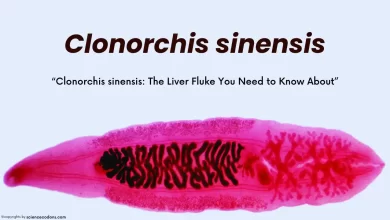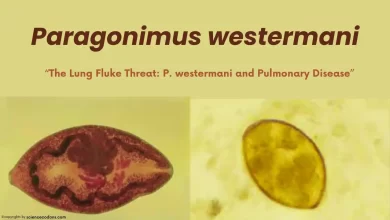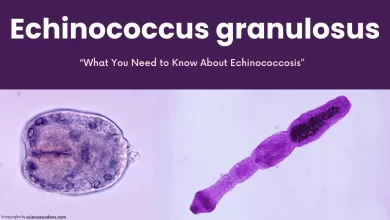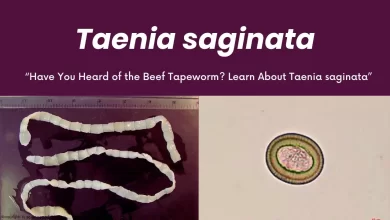Enterobius vermicularis, also known as pinworm, oxyuris, or threadworm, is a type of gastrointestinal nematode that infects humans. This nematode is responsible for enterobiasis, which is the most common type of worm infection in the developed world.
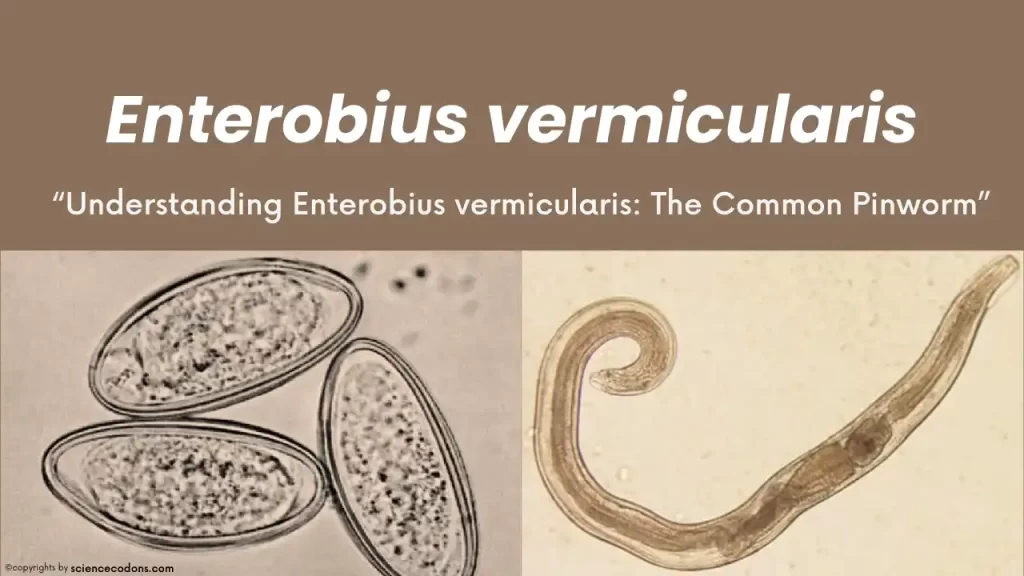
It is similar to Ascaris lumbricoides, another type of nematode. Enterobius vermicularis is globally prevalent and infects approximately 43 million people worldwide. The infection primarily occurs in children and is more common in temperate and cold regions.
What is E. vermicularis? [Morphology & Characteristics]
The male worm of Enterobius vermicularis is 2-5 millimeters long with a coiled end and a long spicule with three lips at the head. Female worms can reach up to one centimeter in length (8-13 millimeters) and have sharp ends, which is why they are often called pinworms. The uterus of the female worm is full of eggs (they lay about 11,000 eggs per day), and the genital opening is at the front of the body. There are two morphological keys for diagnosing oxyuris:
- The esophagus has a bulbous or onion-like shape (bulb esophagus).
- The cephalic alae (Alea), where the cuticle usually thins on both sides of the head and takes on a fish fin-like shape.
The eggs of E. vermicularis are asymmetrically oval, 25 by 55 microns in size, and double-layered. The outer layer is albuminous and sticky. They usually become infectious and contain larvae within 6 hours. These larva-containing eggs are called “ovoviviparous.” Air, water, and food can transmit these eggs, causing human infection. The egg of oxyuris has one side that is almost flat, and the other side is convex.
The life cycle of Enterobius vermicularis
Enterobius vermicularis lives in the large intestine (cecum, colon, and rectum). After mating, the female worm migrates to the skin folds around the anus to lay eggs, usually in the morning—this migration and egg-laying cause anal itching. The eggs become larvated within 6 hours. If a child scratches the anus and then puts their finger in their mouth, it causes self-infection (autoinfection).
These eggs can be spread through the air, children’s underwear, children’s blankets, and airborne dispersal by shaking a child’s bed linen, and as a result, inhalation by other family members causes them to become infected. Therefore, if a child is infected with Enterobius vermicularis, it is likely that all family members are infected, and all should be treated. Here, both external and internal self-infection can occur.
The life cycle of E. vermicularis lasts 4 to 7 weeks. When mature eggs are ingested by the individual or enter the digestive system through the air, swallowing, or breathing, the larva emerges from the egg in the small intestine and migrates to the large intestine, where it matures. In the large intestine, male and female worms mate, and the female worm migrates again to the skin folds around the anus to lay eggs.
| Stage | Description |
|---|---|
| Egg | Gravid females deposit eggs on perianal folds. Infection occurs via self-inoculation or exposure to eggs in the environment. |
| Larvae | Following ingestion, larvae hatch in the small intestine. Adults establish themselves in the colon, usually in the cecum. |
| Adult | The time interval from ingestion of infective eggs to oviposition by the adult females is about one month. Adult females measure 8 to 13 mm, males 2 to 5 mm. |
What are pinworm symptoms?
Mild infections caused by Enterobius vermicularis usually have no symptoms, but the main symptom seen in severe infections is anal itching. The cause of the itching is the migration of the female worm and egg-laying in the skin folds around the anus. Digestive symptoms such as nausea, diarrhea, abdominal pain, sleep disturbances in children, neurological symptoms, and loss of appetite may be seen in this disease.
| Symptom | Description |
|---|---|
| Itching | Intense itching around the anus, especially at night. |
| Discomfort | Pain, rashes, and discomfort around the anus. |
| Sleep Disturbances | Insomnia and restlessness due to itching. |
| Visible Worms | Presence of pinworms around the anus or in stool. |
| Abdominal Pain | Abdominal pain that comes and goes. |
| Appetite Loss | Some patients may experience loss of appetite and mild nausea. |
In cases where anal itching is very severe, the anus may become ulcerated, and the entry of bacteria into these ulcers can cause secondary bacterial infection. Also, the entry of the worm into the appendix can cause appendicitis. That is, with the ulceration of the anal area due to itching, the local bacteria cause infection and contamination. Also, in girls, due to the proximity of the anus and vagina, worms may mistakenly enter the girl’s reproductive system and cause vaginitis and Urogenital problems.
Diagnosis of Enterobius vermicularis
In stool tests, we can only observe the eggs in 5 to 10 percent of cases, and a stool test is not a routine test for diagnosing this nematode infection. The gold standard for diagnosing oxyuris is usually the Scotch tape test. We previously mentioned that we use it for Taenia saginata. Usually, a tape similar to cellophane is given to the child’s mother (along with a slide and gloves); she sticks this tape on the child’s anus near morning, then turns it on the slide and refers to the slide for study in the laboratory (examination under a microscope). If the person is infected, the oval eggs containing larvae can be seen under the tape.
Prevention and Treatment
Prevention
To prevent infection with E. vermicularis, it is recommended to observe hygiene, trim children’s nails, ventilate the house properly, and teach proper hygiene to children and families. This disease is especially transmitted among children while playing together and washing hands is one of the main and important ways to prevent infection with this worm.
Treatment
In the treatment process as well, treatment is done collectively and for the whole family with one of the following drugs:
- Pyrantel pamoate: at a dose of 10-20 milligrams per kilogram as a single dose SD
- Pyrvinium pamoate: at a dose of 0.5 milligrams per kilogram
- Thiabendazole: at a dose of 50 milligrams per kilogram in 2 doses
- Mebendazole: 100 milligrams per kilogram as a single dose SD
Conclusion
Enterobius vermicularis, or pinworm, is a common parasitic infection that primarily affects the gastrointestinal tract. Despite its prevalence, it is often overlooked in discussions of public health. Awareness and education are key in preventing the spread of this parasite, as it is highly contagious and easily transmitted through close contact and poor hygiene. Effective treatment and diligent hygiene practices can significantly reduce the incidence of infection. As such, it is important for individuals, especially those with young children, to be informed about the symptoms, transmission, and treatment of pinworm infections to ensure the health and well-being of communities. If you need more in-depth information or specific details, feel free to ask!
Reference
- 108: Pinworm Infection: (Enterobius Vermicularis) – AAP Publications
- Caldwell, J P. “Pinworms (Enterobius vermicularis).” Canadian family physician Medecin de famille canadien vol. 28 (1982): 306-9.NCBI
- Rawla P, Sharma S. Enterobius Vermicularis. [Updated 2023 Aug 1]. In: StatPearls [Internet]. Treasure Island (FL): StatPearls Publishing; 2024 Jan-. NCBI
- De Kostha, Y.B.N.S., Pathirana, S.L., Handunnetti, S.M. et al. Characterization of antigens of Enterobius vermicularis (pinworm) eggs. Sci Rep 12, 14414 (2022). https://doi.org/10.1038/s41598-022-18303-8
